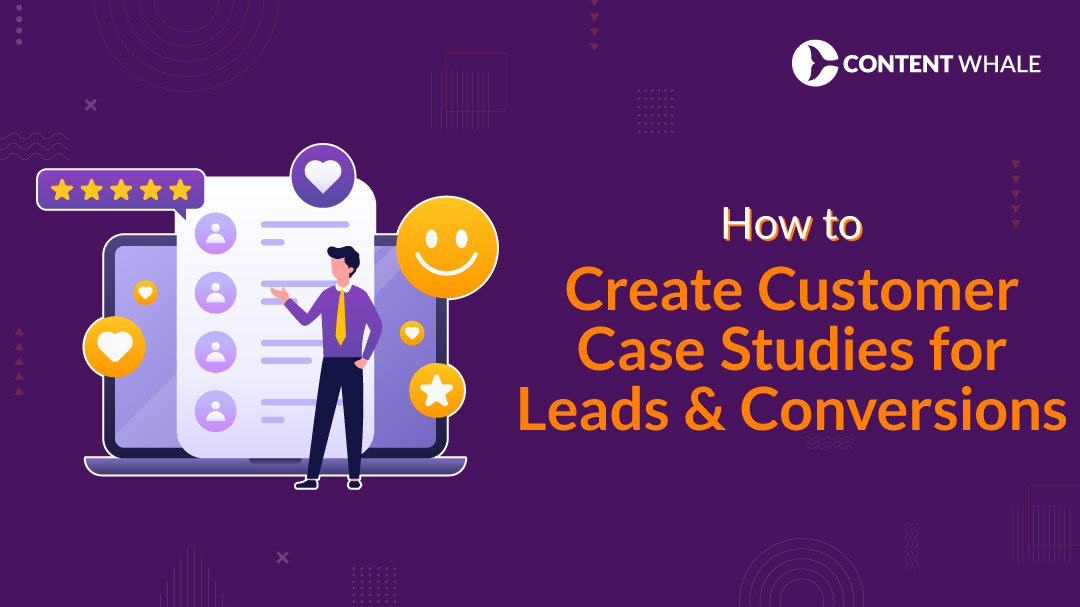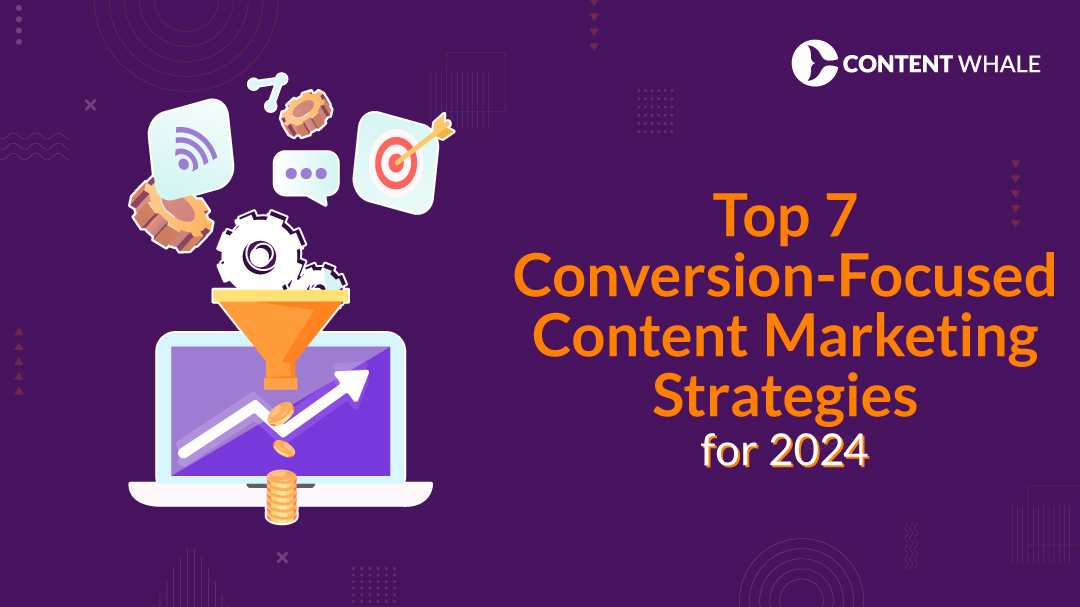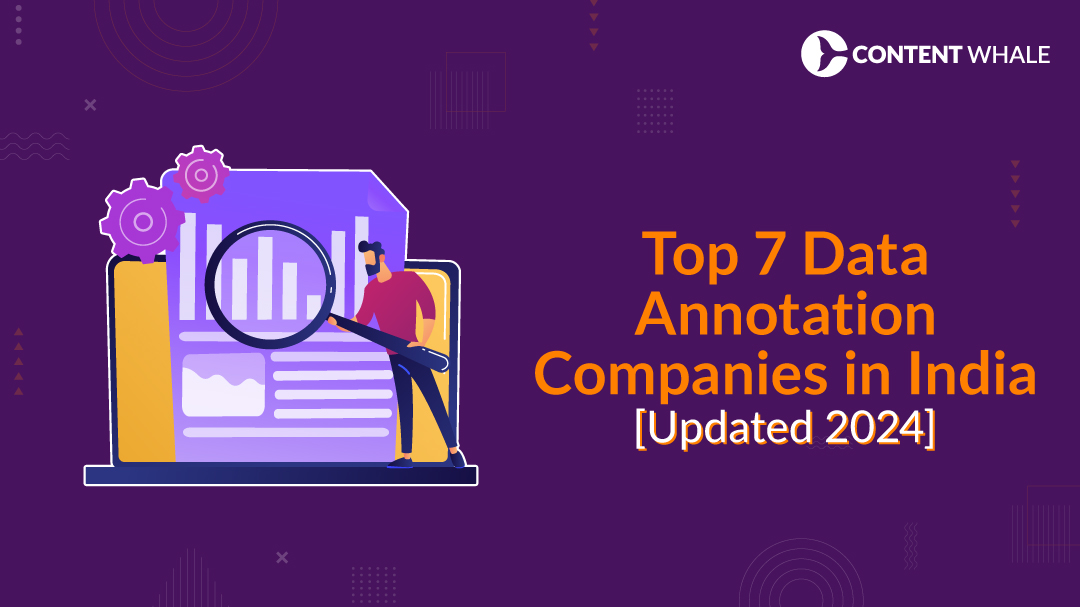OpenAI’s launch of GPT-4o marks a significant milestone in the evolution of artificial intelligence technology. This new model, introduced in May 2024, builds on the foundations of its predecessors by integrating advanced multimodal capabilities that promise to revolutionize how we interact with machines.
With its enhanced speed, efficiency, and broader user capacity, GPT-4o is poised to set new standards in the AI domain.
Since we rank #1 in India as a content writing company, here’s how we used ChatGPT-4o to showcase our potential to the world:
As AI continues to reshape various sectors, the introduction of GPT-4o brings forth questions about its potential to outpace the competition.
This blog explores the capabilities of GPT-4o, comparing it to previous models, and delving into its accessibility and advanced features.
We also consider how businesses can leverage this new technology and evaluate OpenAI’s position in the competitive landscape of AI developers.
Stay tuned as we unpack whether GPT-4o is indeed a game-changer capable of leading the next wave of AI innovation.
In the following sections, we’ll explore GPT-4o’s significant enhancements, how it compares to GPT-4, and how developers and businesses can access and utilize these powerful new capabilities to stay ahead in a rapidly advancing technological field.
What Does GPT-4o Bring to the Table?

OpenAI’s GPT-4o introduces a suite of enhancements that significantly expand its capabilities beyond the already impressive GPT-4, pushing the boundaries of what artificial intelligence can achieve in practical applications.
This new model enhances integration across multiple modes of communication and interaction, offering a transformative approach to human-computer interaction.
1. Multimodal Capabilities
GPT-4o is not just a language model; it is designed to understand and generate content across text, images, and audio.
This ability makes it exceptionally versatile in processing and responding to queries that require a nuanced understanding of different data types.
For instance, it can analyze a document, recognize objects in an image, and understand spoken commands all within the same workflow.
2. Increased Processing Speed and Efficiency
GPT-4o is engineered for speed. This improvement is crucial for real-time applications such as digital assistants, live customer support, and interactive media, where response time is critical for user satisfaction and engagement.
3. Enhanced Capacity for Users
GPT-4o supports a higher number of simultaneous interactions, allowing more users to benefit from its capabilities at once.
This feature is particularly beneficial for businesses that require heavy usage without compromising performance, such as in customer service bots or data analysis tools.
4. Improved Safety Features
With the advancement of AI capabilities comes the need for improved safety measures.
GPT-4o incorporates advanced AI-driven algorithms to better manage the risks associated with generating harmful content, ensuring safer interactions and compliance with regulatory standards.
These measures are vital in maintaining trust and reliability as AI becomes more integrated into critical processes.
Overall, GPT-4o represents a significant leap forward in AI technology, promising to enhance how businesses and individuals interact with machine intelligence.
The integration of these advanced capabilities positions OpenAI to remain a leader in the AI technology space, potentially outpacing competitors in creating more adaptable, efficient, and safer AI systems.
How is GPT-4o Better than GPT-4.0?
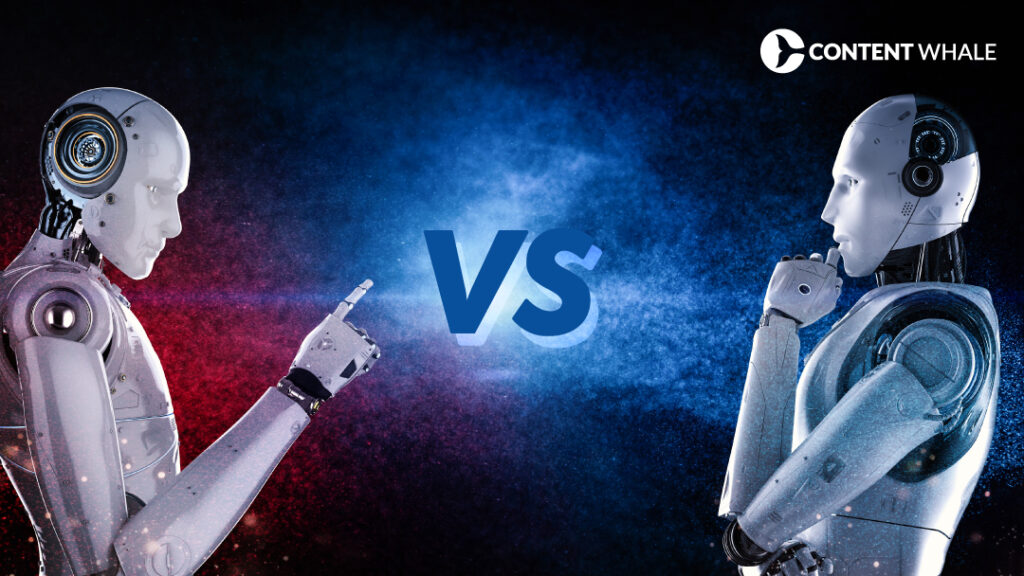
| Feature | GPT-4.0 | ChatGPT-4o | Enhancements in ChatGPT-4o | Sources |
|---|---|---|---|---|
| Multimodal Integration | Text and basic image processing | Advanced text, image, and audio integration | Seamlessly integrates multiple types of inputs for dynamic content generation | Source |
| Performance and Efficiency | Fast processing speeds | Faster processing with reduced latency | Enhances real-time interaction capabilities for applications like virtual customer support | Source |
| User Capacity | High user capacity | Expanded user capacity | Scales to support more simultaneous interactions without performance drops | Source |
| Safety and Compliance | Basic content filters and safety measures | Advanced safety features and compliance enhancements | Improves content filtering and adherence to global AI ethics and safety standards | Source |
| Accessibility | Accessible to developers with technical expertise | Broader accessibility and easier integration | Makes it easier for a diverse user base to utilize AI capabilities, fostering broader innovation | Source |
How to Access GPT-4o?

Accessing GPT-4o is streamlined to ensure developers, businesses, and enthusiasts can leverage its advanced capabilities without extensive setup complexities.
OpenAI provides several pathways for individuals and organizations to explore and integrate GPT-4o, whether for experimentation, development, or deployment at scale. Here’s how you can start utilizing this powerful AI model.
1. Subscription Plans and API Access
OpenAI offers free use of GPT-4o for limited capability and then extended usage through various subscription tiers, catering to different user needs.
For individual developers looking to test or develop smaller-scale projects, the ChatGPT Plus plan provides a solid starting point with access to GPT-4o’s basic features.
Businesses with less than 120 team members can use Teams Plan. Finally, larger enterprises can opt for customized subscription plans, which offer enhanced access, including higher throughput and extended request limits, suitable for high-demand applications.
2. Integrating GPT-4o via OpenAI API.
To begin using GPT-4o, developers need to integrate it into their applications via the OpenAI API. This process involves several key steps:
- API Key: First, obtain an API key from OpenAI by registering on their platform and selecting the appropriate plan.
- API Documentation: Consult the comprehensive API documentation provided by OpenAI to understand how to make requests to GPT-4o. The documentation includes detailed instructions on configuring your requests to use the new model effectively.
- Development Libraries: OpenAI supports several client libraries, including Python, Node.js, and Ruby, making it easier to integrate GPT-4o into your existing development environment.
3. Using OpenAI Playground
For those who are not ready to dive into coding, the OpenAI Playground offers a user-friendly interface for experimenting with GPT-4o’s capabilities.
Users can input text, images, or audio and see how GPT-4o responds in real-time, providing a hands-on approach to understanding its functionality without any coding requirement.
4. Educational Resources and Support
OpenAI provides extensive resources and support to help users maximize their use of GPT-4o.
This includes tutorials, webinars, and a dedicated support team to assist with technical questions and integration challenges.
Community forums and developer portals also offer valuable insights and peer support.
By following these steps, users can harness the capabilities of GPT-4o to enhance their applications, create innovative solutions, and drive forward the boundaries of what is possible with AI.
Whether you are a solo developer, a startup, or a large corporation, GPT-4o opens up a world of possibilities for enhancing your technological offerings.
Advanced Features of GPT-4o
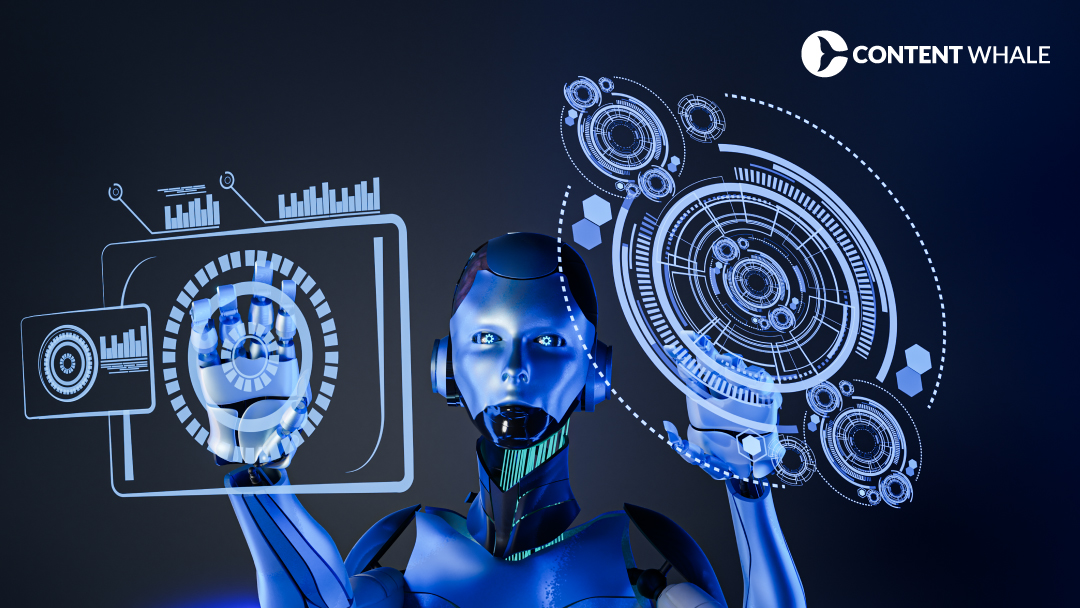
GPT-4o is equipped with a range of advanced features that enhance its utility across various domains, making it a formidable tool in the AI toolkit.
These features not only enhance the model’s versatility but also its practicality for complex applications in business, creative industries, and beyond.
Here’s an overview of some of the standout features that define GPT-4o.
1. Enhanced Multimodal Capabilities
As already explained above, GPT-4o goes beyond traditional text-based interactions by offering robust multimodal functions.
This model can process and synthesize information across text, images, and audio inputs, allowing it to perform tasks such as generating detailed reports from visual data, converting spoken language into written text, and more.
Such capabilities make it incredibly useful for sectors like healthcare for medical imaging, media for content creation, and customer service, where simultaneous handling of various data types is necessary.
2. Real-Time Processing
One of the critical advancements in GPT-4o is its ability to process data in real-time.
This is crucial for applications requiring immediate responses such as interactive chatbots, real-time monitoring systems, and instant content moderation tools.
The improvement in processing speeds helps reduce lag, ensuring a smoother user experience and higher efficiency.
3. Expanded Contextual Understanding
GPT-4o features an even expanded memory or context window, allowing it to remember and refer back to much earlier points in a conversation or data stream.
This capability is particularly beneficial for complex problem-solving scenarios where multiple interactions or long-form data are involved.
It allows the AI to maintain coherence over longer interactions, making it an ideal solution for tasks such as legal document analysis, lengthy educational modules, and in-depth technical support.
4. Advanced Safety Protocols
Security is paramount in AI deployments, and GPT-4o addresses this with enhanced safety protocols.
It includes improved content filters to block harmful or inappropriate material and mechanisms to ensure that the AI adheres to ethical guidelines.
These features are crucial for maintaining user trust, particularly in sensitive applications involving personal data or vulnerable populations.
5. Customization and Scalability
GPT-4o offers extensive customization options that cater to specific user needs.
Developers can fine-tune the model to better suit their application’s demands, ranging from adjusting response styles to specializing in certain types of tasks.
Moreover, GPT-4o’s architecture supports scalable deployment, from small-scale operations to enterprise-level solutions, without a significant loss in performance.
These advanced features of GPT-4o demonstrate OpenAI’s commitment to pushing the boundaries of what AI can achieve.
By integrating these sophisticated capabilities, GPT-4o is not just a tool for today but a foundation for future innovations in AI.
How Businesses Can Benefit from GPT-4o Update?

The recent launch of OpenAI’s GPT-4o offers substantial benefits for businesses across industries. It promises to drive innovation, enhance customer experiences, and streamline operations.
This section outlines the practical advantages GPT-4o provides to the business sector, supporting organizations in their quest to leverage cutting-edge AI technology.
1. Automation of Complex Processes
GPT-4o’s ability to understand and generate responses based on complex datasets significantly aids in automating business processes.
Industries such as finance, legal, and healthcare can utilize GPT-4o to automate tasks like document analysis, risk assessment, and diagnostic assistance.
This reduces the workload on human employees and increases accuracy, reducing the likelihood of human error.
2. Enhanced Customer Interaction
With its advanced language processing and real-time response capabilities, GPT-4o can power sophisticated customer service chatbots that handle inquiries with a human-like understanding.
This technology can engage customers 24/7, providing quick responses to inquiries, which enhances customer satisfaction and loyalty while reducing operational costs for maintaining large customer service teams.
3. Personalization at Scale
GPT-4o can analyze customer data to offer personalized recommendations and services.
Retailers, for example, can use this AI to recommend products based on browsing history, purchase behavior, and preferences, which enhances the shopping experience and can significantly increase sales.
4. Innovative Marketing Solutions
Marketing teams can leverage GPT-4o’s creative capabilities to generate content, such as writing promotional materials or creating engaging multimedia content.
The AI’s ability to analyze current trends and generate relevant content can make marketing campaigns more effective and timely.
5. Improved Decision Making
By integrating GPT-4o into business intelligence tools, companies can gain deeper insights from their data.
The AI can help identify patterns and trends that might not be visible to human analysts, supporting strategic decisions that drive company growth and efficiency.
6. Training and Development
GPT-4o can be used in employee training and development by providing personalized learning experiences.
It can simulate different scenarios and provide real-time feedback, which is particularly valuable in roles requiring complex decision-making skills, such as leadership training or technical job functions.
7. Risk Management
With its expanded contextual understanding, GPT-4o can help businesses in risk management by monitoring and analyzing communications and transactions for anomalies that could indicate fraudulent activities or compliance issues.
This proactive identification helps in mitigating risks before they can impact the business significantly.
By integrating GPT-4o, businesses not only enhance their operational efficiency but also improve their capability to innovate and stay competitive in a rapidly changing market.
The adaptability and range of applications of GPT-4o make it a valuable asset for any company looking to invest in artificial intelligence.
Competitor Analysis of OpenAI’s ChatGPT with New GPT-4o Update

With the introduction of GPT-4o, OpenAI has positioned itself at the forefront of the AI industry, but it is not without competition.
Major tech companies have been quick to develop their AI models, striving to capture a significant share of the market.
This section examines how GPT-4o stacks up against its main competitors, providing businesses and developers with a clear perspective on the AI tools available.
The competitive landscape for AI models like OpenAI’s GPT-4o includes several key players: Google’s Gemini, Perplexity AI, Microsoft’s Copilot, and Anthropic’s Claude.
Each of these models offers distinct features and focuses, making the competition diverse and dynamic.
1. Google Gemini
Google Gemini is integrated into Google’s ecosystem, enhancing its suite of applications with advanced AI capabilities.
Gemini excels in tasks such as translation, text generation, and summarization, and is notable for its robust handling of visual and audio inputs.
Gemini models vary in complexity from the basic Nano to the advanced Ultra, each suited to different tasks, with the Pro and Ultra models requiring a subscription for access.
2. Microsoft Copilot
Microsoft Copilot is deeply integrated with Microsoft 365, enhancing productivity tools like Outlook, Word, and PowerPoint.
It offers different specialized GPTs, such as a Designer and Vacation Planner, which are tailored to specific types of queries.
Its integration enhances functionality by automating tasks within these applications, although it currently does not support Google Workspace, limiting its cross-platform utility.
3. Perplexity AI
Perplexity AI distinguishes itself by focusing on deep research capabilities.
It is highly valued for academic and detailed research tasks due to its real-time data access and reliable sourcing.
Perplexity provides concise answers with linked sources, making it a strong contender for users who prioritize detailed and accurate information retrieval over creative content generation.
4. Anthropic’s Claude
Anthropic’s Claude performs exceptionally well in language understanding and reasoning tasks.
It scores highly on benchmarks like the MMLU for language understanding, making it a strong choice for tasks requiring complex reasoning and text generation.
Claude’s integration capabilities and focus on safety and ethical AI use make it a compelling choice for users who value these aspects.
5. OpenAI’s GPT-4o
In comparison to these models, GPT-4o’s key advantage lies in its multimodal capabilities, which allow it to handle and integrate multiple forms of data (text, image, audio) seamlessly.
This makes GPT-4o particularly versatile for applications that require a holistic approach to AI interactions, from consumer-facing AI applications to backend data processing systems.
| AI Model | Integration | Key Capabilities | Strengths | Pricing |
|---|---|---|---|---|
| Google Gemini | Google Workspace | Text, visual, and audio inputs; translation, generation | Diverse input handling; Google ecosystem | Freemium; Subscription for advanced models |
| Microsoft Copilot | Microsoft 365 | Specialized GPTs for specific tasks; presentation editing | Deep integration with productivity tools | Freemium; Paid for advanced features |
| Perplexity AI | N/A | Deep research, real-time data access | Detailed research with source linking | Freemium; Paid plans for advanced features |
| Anthropic’s Claude | N/A | Language understanding, complex reasoning | High performance in text reasoning | Closed beta; No public pricing |
| OpenAI GPT-4o | Broad API support | Multimodal capabilities; real-time processing | Advanced multimodal interactions | Tiered pricing models |
For businesses and developers choosing between these options, the decision will largely depend on specific needs such as the type of tasks, integration requirements, and the importance of multimodal capabilities.
Each AI model offers unique strengths, and the choice would hinge on aligning these capabilities with the user’s or organization’s goals.
Current Challenges and Future Trends of Open AI and Other GPT Companies

As AI technology rapidly advances, it presents a dual-edged sword of opportunities and challenges.
The release of OpenAI’s GPT-4o highlights the significant strides made in artificial intelligence, but it also underscores ongoing challenges that developers and users face.
Simultaneously, it points towards emerging trends that could shape the future of AI.
1. Current Challenges of GPT Models like GPT-4o
- Scalability: While GPT-4o offers enhanced scalability, ensuring consistent performance at scale remains a challenge.
- Data Privacy and Security: As AI models become more capable of processing extensive and sensitive data, concerns about privacy and security grow.
- Bias and Fairness: Despite improvements, GPT-4o, like its predecessors, must continuously address the inherent biases in training data, ensuring fairness and neutrality in AI-generated content.
- Regulatory Compliance: With the AI field evolving so rapidly, regulations struggle to keep pace. Developers must navigate an uncertain regulatory environment, adapting to new laws that aim to govern AI use and capabilities safely.
2. Future Trends of GPTs
- Greater Multimodal Capabilities: The trend towards multimodal AI is set to intensify, with future models likely to enhance their ability to understand and process a wider array of sensory data — not just text and images but potentially more nuanced elements like emotional tone or cultural context.
- AI and IoT Convergence: The integration of AI with the Internet of Things (IoT) promises a future where AI can interact more dynamically with the physical world.
- Ethical AI Development: As public awareness of AI capabilities and their potential consequences grows, there is a significant push towards ethical AI development.
- Autonomous Decision-Making: Future AI models are expected to handle more complex decision-making tasks, reducing the need for human intervention. While this raises concerns about ‘black box‘ AI systems, it also opens up possibilities for AI to manage complex systems like traffic networks or financial markets.
- Collaborative AI: Moving forward, AI is likely to evolve from being a tool that replaces human effort to one that collaborates more effectively with humans, redefining efficient partnerships between humans and machines.
Understanding these challenges and trends is essential for anyone involved in AI development or usage as they navigate the present landscape and prepare for the future.
As GPT-4o and similar technologies continue to evolve, they will likely address these challenges while also paving the way for new possibilities in AI applications.

As we reflect on the advancements brought by OpenAI’s GPT-4o, it’s clear that this technology promises significant enhancements in AI applications and raises questions about AI’s future role in society.
GPT-4o represents a leap forward in artificial intelligence, providing businesses, developers, and consumers with powerful tools to enhance their operations and services.
In conclusion, GPT-4o is not just a technological upgrade; it is a catalyst for broader changes in the technological landscape.
Businesses and individuals alike must stay informed and adaptable to leverage the benefits of GPT-4o while navigating the challenges it brings.
As we look to the future, the role of AI like GPT-4o in shaping our world remains a dynamic and evolving narrative, filled with possibilities for innovation and new ways of interaction that were once thought to be the domain of science fiction.

1. What makes GPT-4o different from previous versions of GPT?
GPT-4o extends the functionalities of its predecessors by integrating multimodal capabilities, which means it can process and understand a combination of text, image, and audio data.
This enhances the model’s applicability in diverse fields such as multimedia content creation, interactive applications, and complex data analysis tasks.
2. How can businesses implement GPT-4o?
Businesses can integrate GPT-4o through OpenAI’s API, which allows them to incorporate the AI model into existing systems.
GPT-4o can be used for automating customer service, enhancing content creation, streamlining operations, and more.
Businesses should evaluate their specific needs and possibly consult with AI integration specialists to make the most of GPT-4o’s capabilities.
3. Is GPT-4o safe and ethical to use?
OpenAI has made significant strides in ensuring that GPT-4o operates within ethical guidelines.
The model is designed with improved safety protocols to handle sensitive information carefully and minimize biases.
However, users and developers are encouraged to continually assess and address any ethical concerns that may arise during practical applications.
4. What are the costs associated with using GPT-4o?
The cost of using GPT-4o depends on the scale and scope of its application.
OpenAI offers various pricing tiers tailored to different usage needs, from individual developers to large enterprises.
Details on pricing can be found on OpenAI’s official website, which provides comprehensive information on subscription plans and pricing structures.
5. Can GPT-4o be customized for specific tasks?
Yes, GPT-4o is highly customizable. Developers can fine-tune the model to better suit specific tasks by training it on particular datasets or adjusting its parameters.
This flexibility allows GPT-4o to be adapted for specialized applications, enhancing its effectiveness and efficiency in targeted scenarios.
6. What future developments can we expect from OpenAI in the AI field?
OpenAI is committed to advancing AI technology responsibly.
Future developments may include further enhancements in AI’s multimodal capabilities, improvements in
AI safety and ethics, and expansions in AI’s ability to perform increasingly complex tasks.
OpenAI also aims to foster a collaborative ecosystem where developers and researchers can contribute to AI’s evolution.
7. Is GPT-4o free?
GPT-4o is free for limited interaction. However, OpenAI provides various access levels through subscription-based plans, which provide extended usage under certain conditions and conversation caps. For extensive use, particularly for commercial purposes or large-scale applications, users typically need to subscribe to a paid plan. Detailed information about the specific terms, including any free usage tiers, can be found on OpenAI’s official pricing page.


